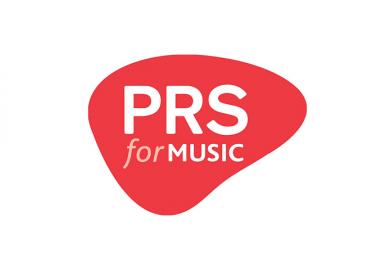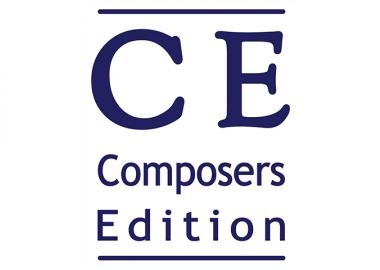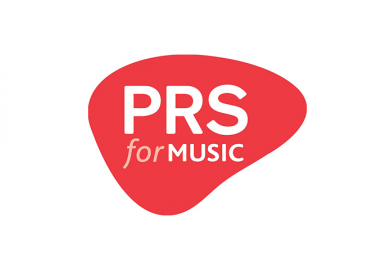Making Music volunteer Martin Jones – an experienced composer and arranger of music for leisure-time ensembles – gives us his top tips for success.
This guide is aimed at music directors, music teachers and others who want, or need, to arrange existing music for a particular ensemble.
It assumes a basic knowledge of the instruments and voices involved and of music theory (harmony, rhythm, form). Inevitably the topic is too vast to cover fully in a guide of this nature, but we hope these basic considerations will provide a useful start. References for further reading are given at the end.
Contents:
- Knowing your ensemble
- Choosing your piece
- Writing simply
- Writing idiomatically
- Maintaining interest
- Presenting scores and parts well
- Further reading
Knowing your ensemble
What forces?
Clearly you must know what instruments and/or voices you are writing for. But it would be good also to know whether the combo is constant, or varies from gig to gig, or whether there are often gaps in the line-up at rehearsals. This will affect how much doubling of lines you include and perhaps how many cues you put into the parts.
What Standard?
Is it a beginners’ group, an intermediate one, an advanced one or perhaps near-professional standard? This guide is really to consider the constraints, so let us assume there are no special constraints in the case of near-professional ensembles and concentrate on the lowest three levels.
We'll define “beginners” as having reached up to ABSRM Grade 3, “intermediate” as Grades 4 to 7 and “advanced” as Grade 8 and beyond.
Some mixing between these levels could occur, so you might want to be aware of any star players or singers in the group and consider their role in the ensemble, e.g. to give them solos and to keep them interested.
The Musical Director of the group will be a good source of advice: before you start, when you have questions and as a final check. Building confidence in each other is the best way towards a successful outcome.
Choosing your piece
Is it inherently simple or complex?
Arranging a simple tune-and-accompaniment is rather different from arranging a classical overture or a march, in terms of complexity. The piece you choose should therefore be suitable for the standard of the ensemble. It should also be suitable for the instruments or voices: often this will not be a problem, but one might consider how well (or otherwise) a percussion group would render a soaring string piece and how well (or otherwise) a choir would sing the Pizzicato Polka.
Is it a suitable genre?
Many ensembles exist to work in a particular genre, such as jazz, or musicals, or the symphonic repertoire, or baroque. Whilst some cross-over might work, it is probably best to aim for the ensemble’s most comfortable genre.
Will the players enjoy tackling it?
To enjoy a piece, the players must get something out of it on a first read-through. So, not too much that will have to be worked out and practised, some nice tunes, rhythms and harmonies, perhaps a bit of humour. That is not to say without challenge. Indeed a bit of a challenge, one that is achievable, will offer the prospect of a glow of pride once it is successfully met. And it is a way for the ensemble as a whole to progress.
You might be able to ask one or two of the players to look through their parts and tell you what they find challenging or fun. In any case, when the piece comes to rehearsal you should be ready to make adaptations to get round something the players have found too difficult.
Will an audience enjoy it?
Probably, if the players enjoy playing it.
Copyright and permissionsThis topic is one which must be considered and the rules adhered to rigorously. If you are rearranging a piece of music in copyright you must get permission to do so. You can find out more in our five-part resource: Copyright, Licensing and Permissions. Briefly: you should contact the Music Publisher's Association or the publisher directly and ask for permission. Googling the publisher name and ‘permissions’ normally points you in the right direction. It can take them a little time to give permission (they may have to contact the composers estate, for example) so you should give yourself plenty of time. Sometimes the permission will come with conditions; that you can only perform it with a certain group, for example. If you are unsure about copyright permissions, feel free to contact us for advice. |
Writing simply
There is a balance to be struck between writing exactly what you want to achieve musically and writing it in a way that players are most likely to understand and enjoy playing – there can be a significant gap between what is intended, what is written and how it comes out when played. Complications take time to sort out: simplicity saves time.
Texture
Even though your score may have many staves, the music will come across best if couched in terms of rather few musical lines. Four-part harmony is a starting point, maybe going to six for a lusher passage, and reducing to two for something simpler, or even to unison.
For variety, four or fewer parts could occupy the treble register while the bass instruments or voices are resting.
At the risk of muddying the orchestral colour a bit, you may wish to ensure, particularly with beginner and intermediate ensembles, that every line is doubled, for example by blending wind and string parts. This will engender confidence amongst the players and also cope with situations where players are missing. Leave no-one exposed unless you know they can cope.
Beats
Whilst a given piece can be written down equally validly with quavers, crotchets or minims (eighth-notes, quarters, halves) as the basic beat unit, most people are happiest reading crotchet beats. Fast music, both classical and on the lighter side, is often written in minim beats, so if the ensemble is familiar with that, you may wish to use them. In compound time, dotted crotchets and dotted minims are acceptable. So if your original piece is notated differently it will be worth resetting it with an easier beat unit.1
It is best to avoid one-in-a-bar: every beat looks the same and it can be difficult for the player to know which bar you are on. Furthermore, the conductor might complain of arm-ache.
Key
Avoid choosing keys with more than four sharps or flats even for transposing instruments. If you must modulate to six flats, it will be easier to read if the key signature has only three or four and the others are put in as accidentals to individual notes.
Compasses & Ranges
The theoretical highest, and sometimes lowest, notes in an instrument’s range or vocal compass are often the least effective and can also be difficult to perform. Vocal ranges or the available compass of a given instrument, especially with woodwind and brass, will vary from performer to performer, and where possible you should consult the performers before writing passages at the extreme ends of their compass.
Writing idiomatically
Strings
Consider judicious bowing, although the players may alter it a bit in practice. Pizzicato and mutes are useful ways to vary the string sound, but check whether (particularly) beginners have mutes. First harmonics (octave above open string) can be good too. However: for beginners, keep to first position2; for intermediates, don’t go higher than an octave above open string.
The strings can provide a delicate accompaniment or boldly take the main interest. Complicated rhythms can be hard for a string section to play together. Bass and cello pizzicato is particularly resonant and can provide a good solid bass line for the quieter passages. The double bass part will often double the cello part, at its own octave, but for intermediate or advanced ensembles it may carry the bass line, possibly with bassoons, while the cellos have a melody or countermelody.
For advanced ensembles suitably large string sections may divide temporarily. It’s best to avoid double-stopping and bigger chords, although adding a lower open string is not too hard. Do not expect beginners or intermediates to have double basses with low extension: just down to the normal E.
Woodwind
Consider breathing opportunities, attack and legato. Avoid extreme upper range and avoid changing instruments in the middle of a piece.
The woodwind work well as an instrumental choir, but also as solo instruments carrying the melody. In unison with a string section they can add particular colours to the sound. Be aware that flutes sound stronger in their upper registers, whereas for oboes the reverse is true: so, for example, in the lower half of the treble stave an oboe does not work well as alto voice to a flute’s melody line. Saxophones tend to sound strong across their range. The middle range of the clarinet (“over the break”) can be awkward.
Brass
Avoid both upper and lower extremes of range. Consider the muted sound, allowing time to fix and to remove the mute.
The brass section is good in block harmony, both on its own and to strengthen the body of the ensemble in climaxes.
Percussion
Unless it is a percussion ensemble or a particularly bombastic piece, percussion is most effective if used sparingly. You should find out which instruments the ensemble has access to, or assume only the basics: cymbals, bass drum, triangle, snare drum. The ensemble may have a range of beaters for some instruments, in which case specify which to use.
For instruments with a ring, e.g., cymbal, triangle, indicate when the sound should be damped. For others, show whether a long note should be rolled. Allow time to prepare moving to another instrument and/or to change beaters.
You should also consider how the parts may be divided amongst the available percussionists, firstly for practicality, secondly to give each a fair share.
Voices
Be careful about range. Too high and voices will be strained; too low and the sound will be hard to project. Children’s voices tend to be lower than you think unless they are trained, for example, in a cathedral choir. Aim for natural word-setting, where the rhythm and stress of the melody match those of the words. Small intervals are easier to pitch than wide ones. In close harmony, bass singers sometimes feel uncomfortable if higher than an octave below the top line.
Keyboards
A piano or harpsichord will provide good harmonic support for voices or an instrumental ensemble. An organ works well with voices and with brass instruments. If you are familiar with an electric piano that would be used, you might consider whether any of its non-standard-piano voices would be useful.
For beginners, no more than two notes in the hand up to an octave apart. Give a good bass line, with clear harmony in the middle register and appropriate rhythm. For beginner voices, the accompaniment should carry both tune and harmony. If you need the keyboard to be prominent, put the right hand in a higher register. If it takes the tune, you might give it to both hands an octave apart.
Maintaining interest
There is a careful balance to be struck here. Your ensemble will be bored if the music is too easy or too dull, or if some players have too many bars’ rest to count: they may switch off as such passages are rehearsed. On the other hand, they could feel undue stress if a passage is quite beyond their technical capabilities at their stage of learning.
So there should be a reasonable challenge so that when overcome through practice and rehearsal the ensemble will feel they have achieved something. Do involve the whole ensemble - no-one likes 'Tacet' - although wind and brass players expect a certain amount of rest in order to rest their lips. Spread the melody around, or provide countermelodies for the lower parts.
Presenting score and parts well
Poor presentation inevitably leads to wasted rehearsal time sorting out confusions. The following will make your arrangement easier to read and to rehearse. Optimising your presentation takes time, but it is an investment that pays well.
Use a computer notation package and a good printer. Sibelius and Finale are the commonest, but there are others with various levels of sophistication, including some free ones (Muse Score is one example). Steinberg has announced a completely new package Dorico which will come to market in the fourth quarter of 2016 after three years of intensive development. It is worth checking if your local library has access to packages too. The more sophisticated packages will allow much of the following to be achieved quite readily.
Legibility
Choose sensible stave sizes. Whilst more music will fit on a page if the stave size is smaller, the notes must be large enough that the players do not have to peer at them. A study score could have smaller staves, but the conductor’s score may need a slightly larger size, and possibly a slightly larger page size, though not as tall as A3.
Space the notes out so that accidentals do not clash with notes. Longer notes will take a little more horizontal space than short ones. Also give sufficient space between staves so that it is clear to which stave various elements apply: dynamics, tempos, expression, rehearsal marks, lyrics. There should be space for the player to write in conductor’s instructions, fingerings, bowings, beatings and other reminders.
In general beam quavers and faster notes according to the beat, and not according to the phrase. This will make clear where the beats are in the bar. Likewise the arrangement of rests within a bar should show clearly where the beats come. It is, however, acceptable to beam four quavers over the first or second half of a common-time bar, or a complete bar of 2/4, and to beam six quavers over a 3/4 bar.
Dotted rests on a beat are acceptable in compound time. Another regular exception is simple syncopation, where a note may stretch across a beat, such as crotchet-minim-crotchet, or quaver-crotchet-crotchet-quaver. In other situations, be guided by clarity.
If you want short, separated notes it is easier for inexperienced people to read if you use staccato dots rather than shorter notes and rests; and if you have rests in between notes within a beat, say in compound time, it is easier to read if you beam across the rests.
Practicalities
Before producing parts or vocal scores, check the arrangement with the conductor, using a study score, and make adjustments to deal with any practical points raised.
The first page of every part should carry the name of the piece, its composer and the instrument name. Subsequent pages, if any, should carry the instrument name at the top and a page number.
The first system of a conductor’s score or a study score should be complete, with every instrument named, in order to indicate the orchestration required.
A percussion part may carry a number of instruments, except timpani, which usually has its own part. If there are not too many different instruments, put them all on one part, so that all players can see everything. Leave them or their teacher or director to sort out who plays what. Consider hiding empty staves if this will not confuse. A separate stave for cues can be useful.
Indicate bar numbers and rehearsal letters or figures. Rehearsal marks are best placed at significant points in the music rather than at regular intervals, and on the barline at the first bar of a phrase. Aim for somewhere between 10 and 20 bars between rehearsal marks, so that there is not too much counting for other starting places.
It can be helpful to mark silent bars with “G.P.” or “silent”, with or without a pause. Show in all parts which beat carries a pause, even if it is a rest bar for that instrument.
Give unique cues, in smaller notes and labelled with the relevant instrument
- during and at the end of a long rest
- where an entry is tricky and dependent on another part
- where the instrument should fill in for a missing part
For 1 and 2 choose as a cue a prominent passage that precedes the entry and, if possible, from the same instrumental family so that the player can hear the passage clearly.
Use H-bar multirests for two or more bars’ rest in the same time signature, although not through a rehearsal mark, cue or key-change.
In UK A4 page size is normal for printed parts nowadays. If there is more than one page, they need to be bound or taped together - no loose sheets! If an A3 printer is available, it may be possible to produce an A4 size booklet stapled at the spine. The part should be printed double-sided on suitably opaque paper (say 100gsm).
Organise practical page-turns for instrumental parts and for accompanied choral scores. Aim for a few bars’ rest or a break between sections, even if this means spreading the music out across the page, or leaving a page intentionally blank. If this cannot be done without squashing things in to fit, you may need to alter the arrangement somehow to create turning opportunities.
In exceptional circumstances it may be possible to have a 3-page spread on the stand. Page-turning considerations will determine whether the music begins on a right-hand or left-hand page. If it begins on a left-hand page (page 2), make page 1 a title page. In the case of an accompanied choral score, it could be useful for the accompanist to have a separate part to avoid frequent page turns.
Avoid page-turns in repeated sections and, if possible, for D.C. and D.S. returns and jumps to Coda. If it is difficult to organise, e.g. no suitable rest, it may be preferable to write out the relevant section again (but do the same for everybody). In general avoid complicated geography: it can be better to use paper and save rehearsal time than save paper and spend time making sure everyone understands the complications.
Some adjustment of margins and stave size may be possible to overcome problems with page-turns.
A conductor’s score should lie flat when open at any page: spiral wire binding is best for any more than a few pages, although this can be difficult to find larger than A4.
With modern technology, it has become a good idea to have the parts available on a portable computer or smart phone (for example in PDF format) at the rehearsals and concert. If a printed part goes missing, it can then be brought up on a screen to recover the situation, or even printed anew if a suitable printer is available at the venue. Check the copyright situation regarding retention or destruction after use of a newly printed part.
1. Georg Philipp Telemann (1681 –1767) wrote a Lilliputsche Chaconne in 3/32 and a Brobdingnagische Gigue in 24/1. Do not follow his example.
2. On violin up to the first B on the top string, viola up to E, cello up to D and bass up to B
Further reading
Books
Music Notation, A Manual of Modern Practice – Gardner Read (second edition 1979): very thorough, explaining the logic behind musical notation and setting out best practice. Covers recent notational innovations in modern scores.
Essential Dictionary of Orchestration (1998): handy, pocket book reference with a great deal of basic information and scoring tips. Brass mutes, synthesisers, musical glasses, thunder sheets and other unusual or uncommon instruments are covered. No illustrations which means the section on unfamiliar percussion instruments is less than helpful.
Instrumentation and Orchestration (second edition 1997) – Alfred Blatter: a very comprehensive textbook. Instrumental compasses are analysed at theoretical, professional, high school and elementary levels. Dynamic curves are shown graphically. Extensive section on percussion, including symbols and playing techniques. Unusually, there is a major chapter on the human voice and modern vocal techniques. Scoring examples for various ensembles is treated in detail, with examples from relatively modern scores. Fingering charts for instruments and information on MIDI protocols and patches are also covered.
The Technique of Orchestration (sixth edition 2002) – Kennan & Grantham: comes with a CD in which alternative treatments of two bars of a Bach chorale can be heard, demonstrating how to balance colour, texture and individual lines. Instrumental compasses show both theoretical limits and commonly used ranges. Lists of suggested listening well worth exploring. Percussion section is limited and could have done with audio samples.
Websites
The following free websites offer a range of resources on composition, harmony, counterpoint and orchestration. They cover a wide span of skills and are especially helpful for those with limited formal training in composing and arranging. The list also includes specialist guidance on writing for brass bands and for the harp.
- http://www.looknohands.com/chordhouse/piano/
- http://www.dolmetsch.com/musictheory41.htm
- http://www.tpub.com/harmony/index.htm
- http://www.musictheory.net/translations.html
- http://www.tonalityguide.com/startcentre.php
- http://www.music.vt.edu/musicdictionary/
- http://www.bandsman.co.uk/writing.htm
- http://www.harpspectrum.org/harpworks/composing_for_harp/composing_for_harp.shtml
- http://www.philharmonia.co.uk/thesoundexchange/the_orchestra/instruments/violin/
- Hugill, A. (2004) The Orchestra: A User's Manual. Available at
- http://andrewhugill.com/manuals/intro.html
- http://www.musicalobservations.com/publications/harmonics.html
- http://music.indiana.edu/departments/academic/composition/style-guide/index.shtml
There is also a free jazz arranging course available via the Garritan website:
Acknowledgements
The author is grateful for suggestions from fellow composer/arrangers Cedric Peachey and Liz Sharma and from Making Music staff.
We hope you find this Making Music resource useful. If you have any comments or suggestions about the guidance please contact us. Whilst every effort is made to ensure that the content of this guidance is accurate and up to date, Making Music do not warrant, nor accept any liability or responsibility for the completeness or accuracy of the content, or for any loss which may arise from reliance on the information contained in it.










